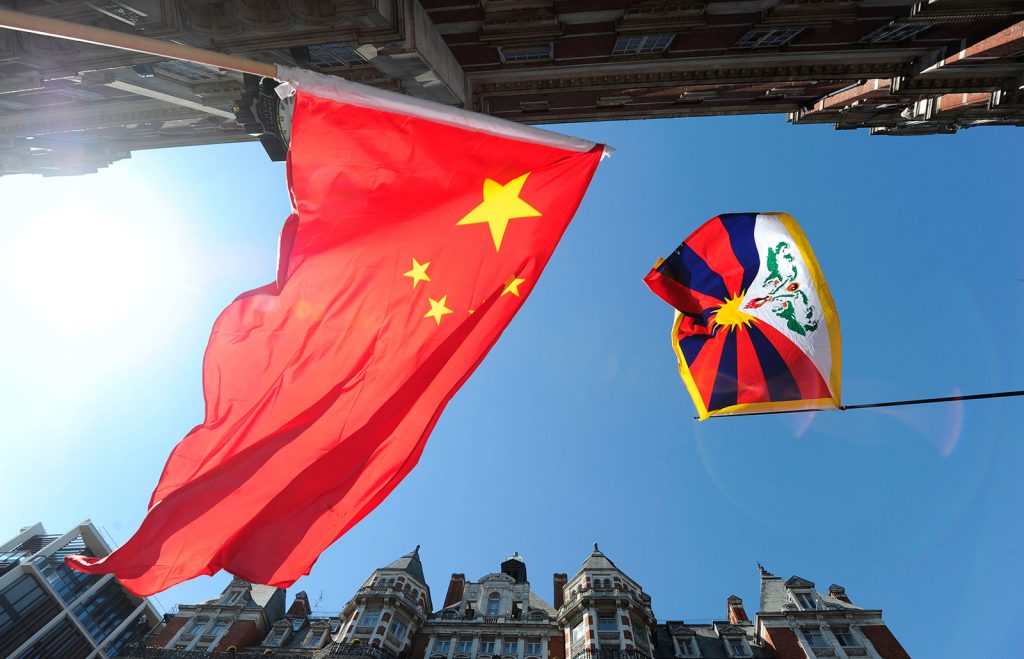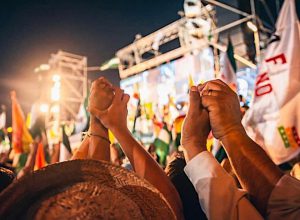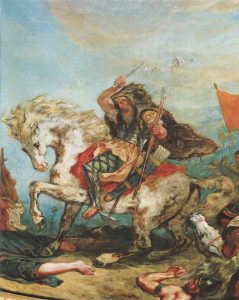Imagine at the age of twenty-three having to walk at night across the Himalayan mountains, to survive and avoid imprisonment, torture, and certain death. This is the only choice the 14th Dalai Lama, Tenzin Gyatso, could make to avoid being imprisoned and most likely killed by the Chinese military.1 This set him on a perilous journey that required him to travel by night, dressed as a soldier, for two weeks and across the tallest and most lethal mountain range, the Himalayas. 2 This was his only option because the fate of his people and their ancient culture depended on his survival.3

Tibet is nestled between the Southwestern border of China, and the Northeastern border of Nepal. Prior to China’s invasion of Tibet in 1950, Tibetan society was governed by a caste system centered around the Buddhist principle of reincarnation, the religion for a country ran as a Theocracy.4 Buddhist reincarnation suggests that if an individual lived a virtuous life, following his or her death, he or she reincarnates into the next highest caste and enjoys said caste’s privileges as the reward of a deeply humble and virtuous life. The one who served as a symbol of unity for the people and who ruled the country by maintaining Tibetan traditions in combining the duties of the spiritual leader and political leader of Tibet is the Dalai Lama.5 The Dalai Lama is not representative of any one school of Buddhist thought, instead he advocates traditional Buddhist values and the preservation of Tibetan traditions.

During the near two-hundred-year rule of China’s Qing Dynasty (1720- 1912), the Dalai Lama was the head of Tibet’s government, with the government enjoying almost complete sovereignty at times. Following the collapse of the Qing Dynasty, in 1914 a convention was held in which British India, China, and Tibet agreed to make Tibet semi-autonomous. 6 Under the agreement China, which never had full control over Tibet, handled Tibet’s foreign relations while Tibet handled its internal affairs and maintained an army. However, thirty-five years later, the plan to rob Tibetans of their autonomy and rights was set in motion.
In 1949, Mao Zedong established China as a communist state known as the People’s Republic of China. A mere two months later Mao ordered the “liberation” of Tibet from its Buddhist leaders.7 The Chinese government painted the Dalai Lama as the architect of a regressive and feudal regime, and promoted themselves as a heroic force of change. 8 Mao believed that Tibet only enjoyed autonomy due to the machinations of foreign influences. He cited Chinese traditions that claimed Tibetans were one of the five races that made up China as evidence that Tibet’s rightful place was as a province of China.9 In 1950, the Chinese military invaded Tibet and defeated its army. Instead of occupying the country, the Chinese government invited Tibetan officials to negotiate an agreement between the two. At the meeting, the Tibetan representatives signed a Seventeen-Point Agreement, acknowledging China’s sovereignty over Tibet.10 The Tibetan government refuted this agreement’s legitimacy, claiming that the delegation sent was not authorized to sign any such documents, nor were they allowed to communicate back home the nature of their situation. It was this combination of Tibet’s military defeat and forced signing of the agreement that set the stage for Mao’s occupation of Tibet and the erosion of Tibet’s freedom and rights.
In 1951, China began exerting its newly affirmed control over Tibet by sending troops into the country and implementing communist reforms. The first reform implemented was the settling Tibetans who were typically a nomadic people and the settlement of more Chinese citizens to the region. The second reform instituted was land redistribution, crops were confiscated by the Chinese government and given to a central authority with only a small amount returned to Tibetans. However, land redistribution was not implemented uniformly across Tibet, reforms were inexplicably delayed in western Tibet, and society largely continued unchanged. Eastern Tibet on the other hand rebelled in 1956, with monasteries and noblemen leading the resistance against Chinese Communists. Guerilla fighters were successful in capturing control of Southern Tibet, however this uprising was costly. The Tibetan uprising of 1959 alone costing anywhere from 85,000 to 87,000 lives, and the response by China resulted in 10,000 to 15,000 Tibetans dying over the course of three days. Fearing the capture of the Dalai Lama, Tibetan citizens surrounded his residence in an effort to protect him.11 Tibetans chose to stand against the Chinese troops outraged by the previous nine years of egregious human rights violations that included many soldiers raping and murdering Buddhist nuns and monks who resisted the reforms.
With this opportunity to escape provided to him by his people the Dalai Lama began is harrowing thirteen-day trek on foot through the Himalayas to India. Upon arriving in India, representatives sent by Prime Minister Nehru welcomed him and the refugees that had followed hoping to escape the atrocities currently being inflicted upon their homeland. The Dalai Lama worked alongside his people who fled to establish the Tibetan government in exile in Dharamshala, Himachal Pradesh, India.

During his time as both the head of the exiled government and after having stepped down from said position the Dalai Lama has worked furiously advocating not just the rights of Tibetans, but people all across the globe.12 The Dalai Lama has spoken on a variety of social issues ranging from the environment, to economics, reproductive health, sexuality, interfaith dialogue, women’s rights, and nonviolence. “Furthermore, everyone appreciates affection and at the same time has the potential for showing affection to others. With this in mind, I have found that friendship and understanding can develop.”13 All while being unable to return to his home of Tibet and not knowing how his subsequent reincarnation was to be found. His existence challenges the Chinese government’s blatant disregard for human rights, which include massacres, tortures, killings, bombardment of monasteries, extermination of nomad camps, and violating at least sixteen articles of the Universal Declaration of Human Rights. Now 81 years old, he may be the last Dalai Lama. The Dalai Lama is traditionally found following his reincarnation by the Panchen Lama, someone who is akin to our U.S. Vice President. Along with the numerous human rights violations committed the Chinese government also arrested both the Panchen Lama and his family, then named their own Panchen Lama in 1995, thereby creating uncertainty as to whether the next reincarnation would follow Tibet’s traditions or serve the Chinese government’s interests.14 To dispel this fog of doubt and concern, the Dalai Lama announced a plan to determine the future of his reincarnation, upon him turning ninety, the Dalai Lama will convene with a trust to decide if it is necessary for a 15th Dalai Lama to be recognized. If it is determined that his reincarnation is necessary, then the Gaden Phodrang Trust will search for and recognize the 15th Dalai Lama, along with the caveat that any person chosen by the Chinese government is to be dismissed by all people.15
Despite attacks on his home, his religion, and himself, the Dalai Lama persists in refusing to call for violence against China. For over fifty years this man, now in the twilight of his life, has spread his message of peace and understanding to the world hoping he could help country and his people one day see the restoration of their basic human rights following years of blatant abuse and maltreatment.16
- Charles George and Linda George, The Dalai Lama, (People in the News. Detroit: Lucent Books, 2010), 50-51. ↵
- Latson Jennifer, How and Why the Dalai Lama Left Tibet, www.time.com. ↵
- Charles George and Linda George, The Dalai Lama, (People in the News. Detroit: Lucent Books, 2010), 37. ↵
- Charles Bell, Tibet and Its Neighbors, (Vancouver: Pacific Affairs, University of British Columbia, 1937), 428-440. ↵
- Robert Thurman, Why The Dalai Lama matters, (New York: Atria Books, 2008), 3. ↵
- Jennifer Stock, Global Events: Milestone Events Throughout History: Vol 2: Asia and Oceania, (Farmington Hills: Gale, 2014), 373-376. ↵
- Charles Henry Alexandrowicz-Alexander, The American Journal of International Law: Vol. 48: No. 2, (Cambridge: Cambridge University Press, 1954), 265-274. ↵
- Charles George and Linda George, The Dalai Lama, (People in the News. Detroit: Lucent Books, 2010), 9. ↵
- Elliot Sperling, Tibet and China: The Interpretation of History Since 1950: China Perspective Vol 3, (2009), 25-26. ↵
- Alex McKay, The History of Tibet: Vol 3 The Modern Period: 1859- 1959, (London and New York: Routledge Curzon, 2003), 607-609. ↵
- Charles George and Linda George, The Dalai Lama, (People in the News. Detroit: Lucent Books, 2010), 47-48. ↵
- His Holiness The Dalai Lama and Howard C. Cutler, The Art of Happiness,(New York: Riverhead Books, 1998), 2. ↵
- Charles George and Linda George, The Dalai Lama, (People in the News. Detroit: Lucent Books, 2010), 64. ↵
- Eric A. McGuckin, Tibet: Struggle for Independence.” In History Behind the Headlines: The Origins of Conflicts Worldwide, (Farmington Hills: Gale, 2003), 272. ↵
- The Dalai Lama, Reincarnation, (Dharamsala: The Dalai Lama, 2011). ↵
- Gary L. Anderson and Kathryn G. Herr, Encyclopedia of Activism and Social Justice, Vol. 3, (Thousand Oaks: Sage Publications Inc, 2007), 417-418. ↵



51 comments
Nadia Carrasco
This article was a great read overall, I was very uninformed about the China-Tibet conflict and this article expanded my knowledge tremendously. Being unaware that Tibet was a primarily Buddhist nation and that China refuses to acknowledge it as an independent nation blew my mind. I had no idea the means that the Dalai Lama had to go through to exit the country. Such as dressing as a soldier, traveling at night across the Himalayas. This just makes me eager to learn more about the issue. Great article and very informative!
Christopher Metta Bexar
This article is well thought out and informative. Attempting to capture the Dalai Lama is equivalent of a European prince wanting to hold the Pope prisoner. His Holiness the 14th Dalai Lama is the spiritual leader of all Tibetan Buddhists worldwide.
Many say this was Mainland China’s greatest diplomatic mistake, interfering in Tibet. The Dalai Lama actually enjoys an international reputation that no leader of the Chinese government has ever enjoyed.
Mason Kheiv
This article was a great read. I was very uninformed about the China-Tibet conflict, and this article helped change that. I was also unaware that Tibet was a primarily Buddhist nation, and that China refuses to acknowledge it as an independent nation. I had no idea the means that the Dalai Lama had to go through to exit the country, dressing as a soldier, traveling at night and across the Himalayas, it makes me want to know more about what he went through.
Samire Adam
Congratulation on your nomination. I absolutely enjoyed reading this article because I gained so much information about the China-Tibet conflict that I initially did not have. The article deals with China’s claim of Tibet as an integral part of China since centuries. The article explains that their claim is on the basis of China’s rich history ruled by several powerful dynasties. What I found most interesting about this was that Tibet’s independent is still not being recognized by the Chinese government even though the dynasty collapsed in early 1900s.
Gabriel Dossey
First, nice title. Second I had no idea any of this had ever happened in Tibet. You for sure have my vote. I think that the story told makes me want to stand with the Tibetans and what happened. I was unaware who the Dalai Lama was, I had heard of him but did not know specifically. I also learned a lot about how Tibet works.
Victoria Rodriguez
Congratulations to you, Robert. This was a very intriguing article and I cannot believe I have not heard this about Dalai Lama. What an enormous amount of responsibility for any one person. Just the fact that your whole culture and people depend on you and your trek.
Bruno Montes de Oca
The determination of someone like the Dalai Lama going to such extents to keep his culture and way of life alive is extraordinary. The fact that that was all because of the Chinese invading is sad, because the Chinese have a history of maltreatment and wrongful invasions. However, reading about how the Dalai Llama is still fighting for his culture is heart warming. Climbing the Himalayas is no small feat, and advocating for a people and a country so small that most people may not care about may be harder, but I wish him all the best.
Lorenzo Rivera
First of all good luck and congratulations on being nominated for an award this semester. This article was both very informative and extremely well written. You did an outstanding job of grabbing the readers attention and presenting your topic. I had never heard of the Dalai Lama before reading this article and was fascinated as soon as I saw how one can stand up for what they believe in a non violent way. It was a really great read, and very enjoyable overall.
Rosa Castillo
Congratulations on your nomination, this article was informative about the life of the Dalia Lama. I never really learned about him prior to my article. I found it particularly interesting to learn about the Dalia Lama’s fight for the rights of the Tibetans and for human rights around the world. His social advocacy is admirable and his actions were brave and courageous. I think the author did a great job of telling the story of someone so remarkable.
Eric Ortega Rodriguez
I have never heard of the Dalai Lama before reading this article. The author does a very good job explaining the context and the role of the Dalai Lama. I find it admirable how Tenzin Gyatso had the courage to stand up for Tibet in a nonviolent way. What he did is incredible and is certainly something that anyone one from any country would admire. Overall, this is a great article with an original topic selection. Outstanding work.